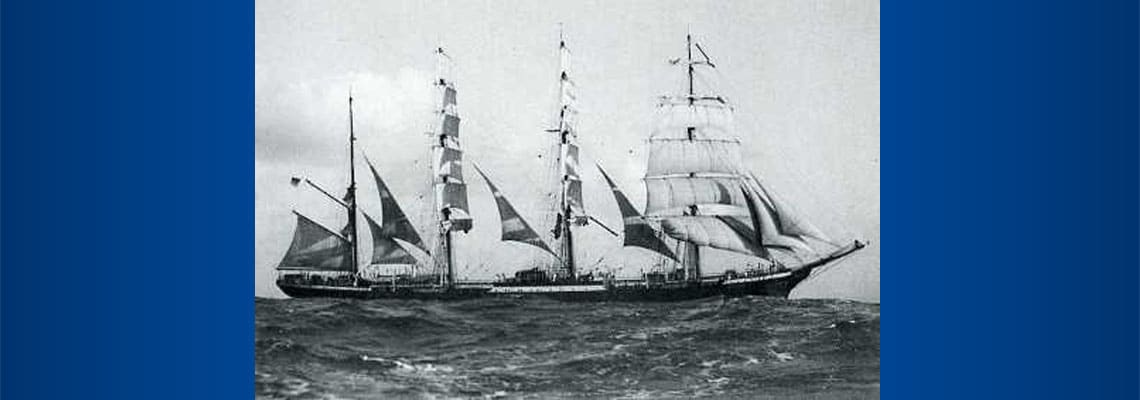
Company Milestones
The worst was to be feared upon hearing the Morse code message "…..all sails lost…..list of forty-five degrees……in danger of sinking." When the British coastal radio station, Portishead Radio, received this message at 16:01 hours, on the 21st of September 1957, it became utterly clear to the recipient that many brave sailors were fighting for their lives. The eighty-six men on board the training sailing ship "Pamir", which was also carrying freight, were the senders of the message. The location of the ship was in the middle of a hurricane in the Atlantic, five hundred nautical miles southwest of the Azores, a group of islands. The condition of the ship was desperate.
The Pamir, a 305-foot sailing ship built in 1905 by the Hamburg shipyard Blohm and Voss, was sturdily built to transport bulk cargo and to endure harsh weather conditions. At the outset of this particular journey, weather conditions did not appear dangerous. As she had done many times before, the "Pamir" transported a load of 7780 tons of barley from Buenos Aires. The transport of grain, however, was not the only task the ship had to endure. Of the crew's eighty-six men, only thirty-five were fully trained, experienced sailors. The remainders were cadets, as the Pamir also functioned as a training ship for the Merchant Navy.
Although Captain Johannes Diebitsch knew beforehand that weather conditions at sea were not perfect, he gave command to set sail from the Argentinean port. The experienced Diebitsch was confident in his decision, as he had already sailed in storms in far smaller ships. After all, what could happen to such a large ship?
This consequential lack of judgment was later described in the Luebeck Maritime Court as "human error." Unfortunately, this was not the only bad decision that led to disaster. The barley that was to be transported was not packed properly in sacks, but rather pumped into the hull as bulk goods. The consequence was the fact that if the ship were to heel, the cargo could easily slide and shift the center of gravity of the ship.
Unfortunately, this is exactly what happened. During the storm, the ship was listing to the starboard side, and the survivors later reported that the Pamir was already tilted thirty degrees on the morning of her last day. The men could only brace themselves, as they probably knew their fate. The storm ripped some of the ship's sails to pieces, and Captain Diebitsch had the remaining sails torn down. Helpless attempts were made to have the ships cargo stowed differently, yet the course of the catastrophe did not end, and the ship did not right itself again.
In the hours that followed, the ship fell onto its side. At this point the SOS radio message was released and the last broken message to come through said "…..mast broken." Most of the men gave up on the Pamir. Some crawled to the hull, attempting to somehow hold on, and others managed to climb into three lifeboats. Unfortunately, many began to die.
When, three days later, the US rescue ship "Saxon," entered those waters, the rescuers at first found only wooden wreckage and many empty lifejackets.
Many people who had been wearing lifejackets fell victim to sharks. Only five men survived in a small lifeboat. There were also men who were wearing lifejackets who were found drifting on top of the water. These men had drowned. Unfortunately, the lifejackets had not stabilized the heads of the shipwrecked people above water. What should have saved lives, brought only death. It is this absurd fact that provided motivation for the businessman Jost Bernhardt to examine the design of the lifejackets meticulously. Bernhardt set out to develop new and better lifejackets, those that deserve their name.
The catastrophe of the Pamir marked the end of the windjammer epoch. Since then, the German Navy maintains only one training sailing ship, the 'Gorch Fock." Always when this sailing ship first docks in Hamburg, the crew immediately visits St. Katherine's church. There, the sailors traditionally lie a wreath at a plaque, where lie the names of the eighty dead from the Pamir.

